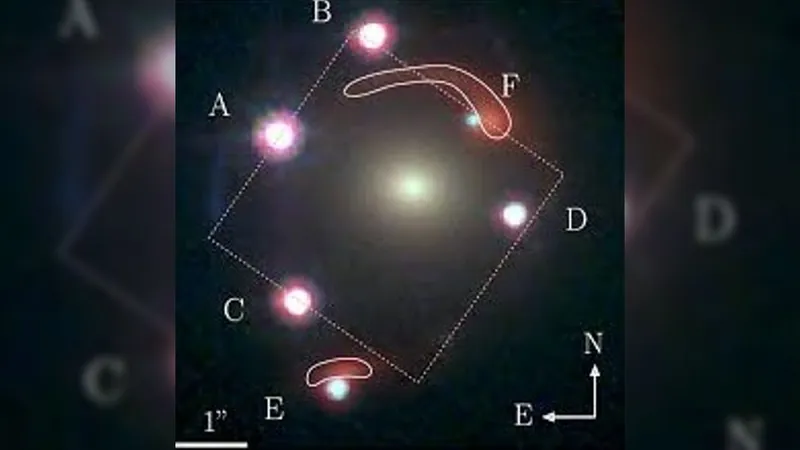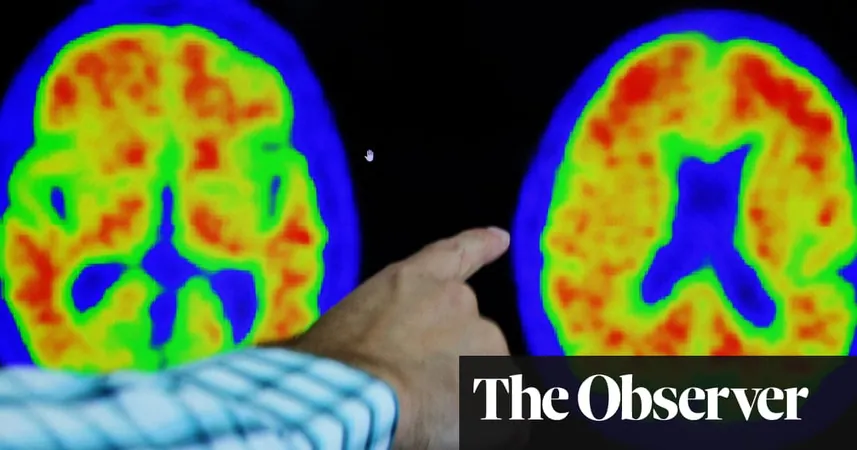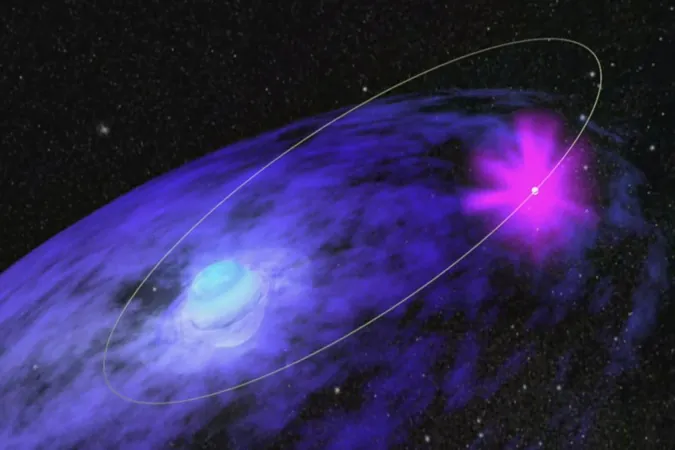
Scientists Reveal Mind-Blowing 'Einstein Zig-Zag' Discovered by James Webb Telescope — A Game-Changer for Cosmology!
2024-11-19
Author: Ling
Scientists Reveal Mind-Blowing 'Einstein Zig-Zag' Discovered by James Webb Telescope — A Game-Changer for Cosmology!
For the first time ever, researchers have harnessed data from the groundbreaking James Webb Space Telescope (JWST) to identify a phenomenon previously thought to be purely hypothetical: the "Einstein zig-zag." This extraordinary occurrence reveals how light from a distant celestial object navigates through two different regions of warped space-time, leading to a groundbreaking discovery that could significantly advance our understanding of the universe.
Back in 2018, astronomers stumbled upon a quartet of identical bright points billions of light-years away, known as J1721+8842. Initially, they hypothesized that these lights were mere mirror images of a single quasar—a brilliantly shining galactic core fueled by a supermassive black hole—due to a phenomenon called gravitational lensing.
But what exactly is gravitational lensing? This fascinating process occurs when light from a far-off object gets bent as it passes through a region of warped space-time, distorted by the immense gravitational pull of a nearby massive galaxy or cluster of galaxies. The result can be a duplication of the light source, where light takes different paths around the lensing object, or the creation of luminous halos called Einstein rings, named after the iconic physicist who first predicted this phenomenon in 1915.
In a surprising twist, a study in 2022 indicated that J1721+8842 actually contained six points of light: the original four, plus two additional fainter ones, along with a subtle red Einstein ring. This led researchers to suspect a binary quasar system that had duplicated itself multiple times.
However, a recent study posted on Nov. 8 revealed new insights. Using JWST's advanced capabilities, researchers revisited J1721+8842 and confirmed that all six luminous points originate from a single quasar. They discovered that these newly identified bright spots are lensed around a second, more distant massive object, which also contributes to the faint Einstein ring seen in recent observations.
After tracking the light curves of each bright point over two years, the scientists identified a slight delay in the arrival time of the faintest duplicate images. This delay indicates that light from these images travels a longer path, passing around different sides of the lensing objects — one traveling around the left side of the first lens and the other around the right side of the second lens.
This rare configuration, dubbed the "Einstein zig-zag," showcases how light from some of the double-lensed points oscillates through distinct paths as it navigates around two lensing galaxies.
Why Is This Important?
Gravitationally lensed objects, especially those forming Einstein rings, are crucial for astronomers and cosmologists, as they help reveal the mass of the galaxies that cause the lensing effect. This information is vital to uncovering the mysteries of the universe, such as the elusive nature of dark matter and the mechanics of dark energy that propel cosmic expansion.
The JWST has proven incredibly adept at spotting these lensed objects in previously invisible regions of the cosmos. However, it has also brought to light discrepancies that challenge our current cosmological models. One such issue is the "Hubble tension," a phenomenon where different measurements suggest various rates of expansion for the universe, potentially undermining our understanding of cosmic mechanics.
Researchers assert that the newly discovered Einstein zig-zag configuration could help resolve this tension. By enabling precise measurements of both the Hubble constant—representing the acceleration of cosmic expansion—and the amount of dark energy, this discovery could enhance our grasp of the universe’s accelerating growth. Understanding both factors is essential to deciphering the cosmic expansion puzzle.
As scientists delve deeper into the universe's secrets, the implications of the Einstein zig-zag are enormous. This pioneering find may not only reshape our understanding of gravitational lensing but also offer critical insights into the fabric of space-time and the ultimate fate of the cosmos itself. Stay tuned for more exciting updates from the world of astronomy!





 Brasil (PT)
Brasil (PT)
 Canada (EN)
Canada (EN)
 Chile (ES)
Chile (ES)
 España (ES)
España (ES)
 France (FR)
France (FR)
 Hong Kong (EN)
Hong Kong (EN)
 Italia (IT)
Italia (IT)
 日本 (JA)
日本 (JA)
 Magyarország (HU)
Magyarország (HU)
 Norge (NO)
Norge (NO)
 Polska (PL)
Polska (PL)
 Schweiz (DE)
Schweiz (DE)
 Singapore (EN)
Singapore (EN)
 Sverige (SV)
Sverige (SV)
 Suomi (FI)
Suomi (FI)
 Türkiye (TR)
Türkiye (TR)